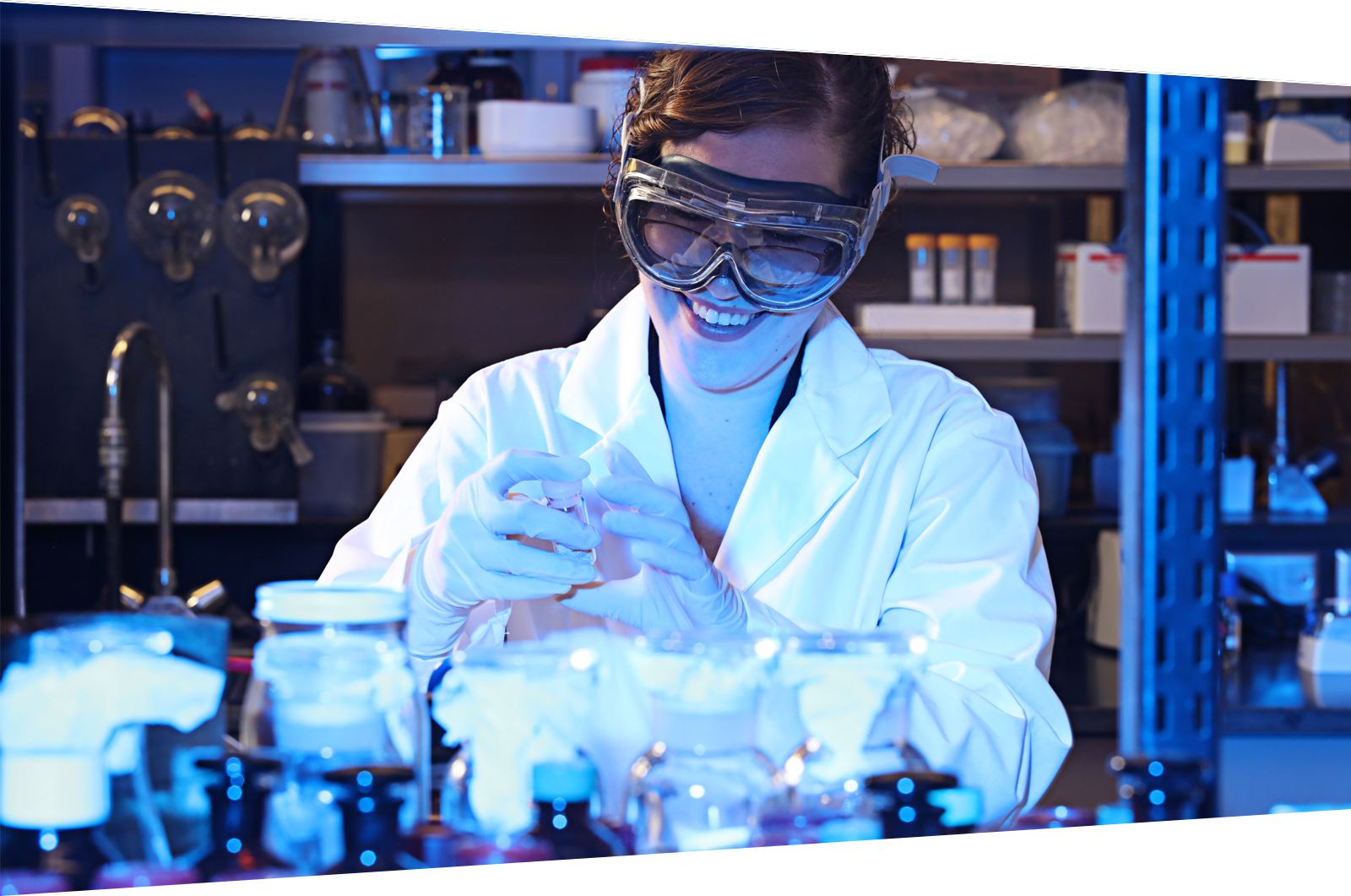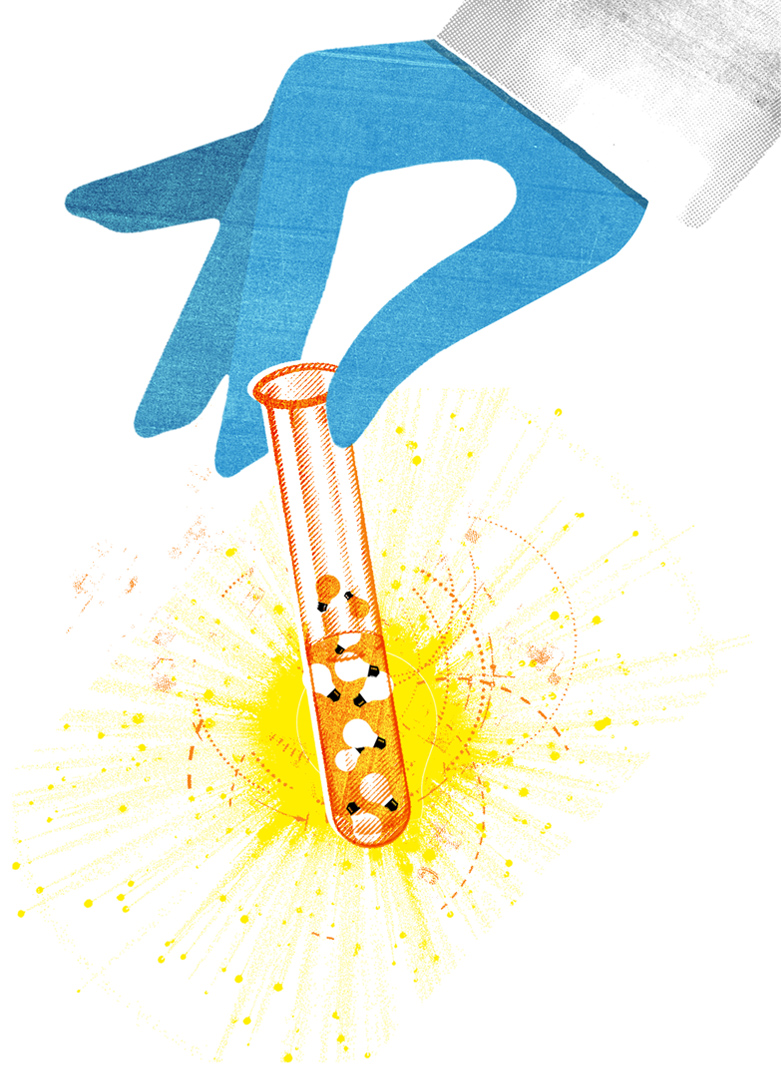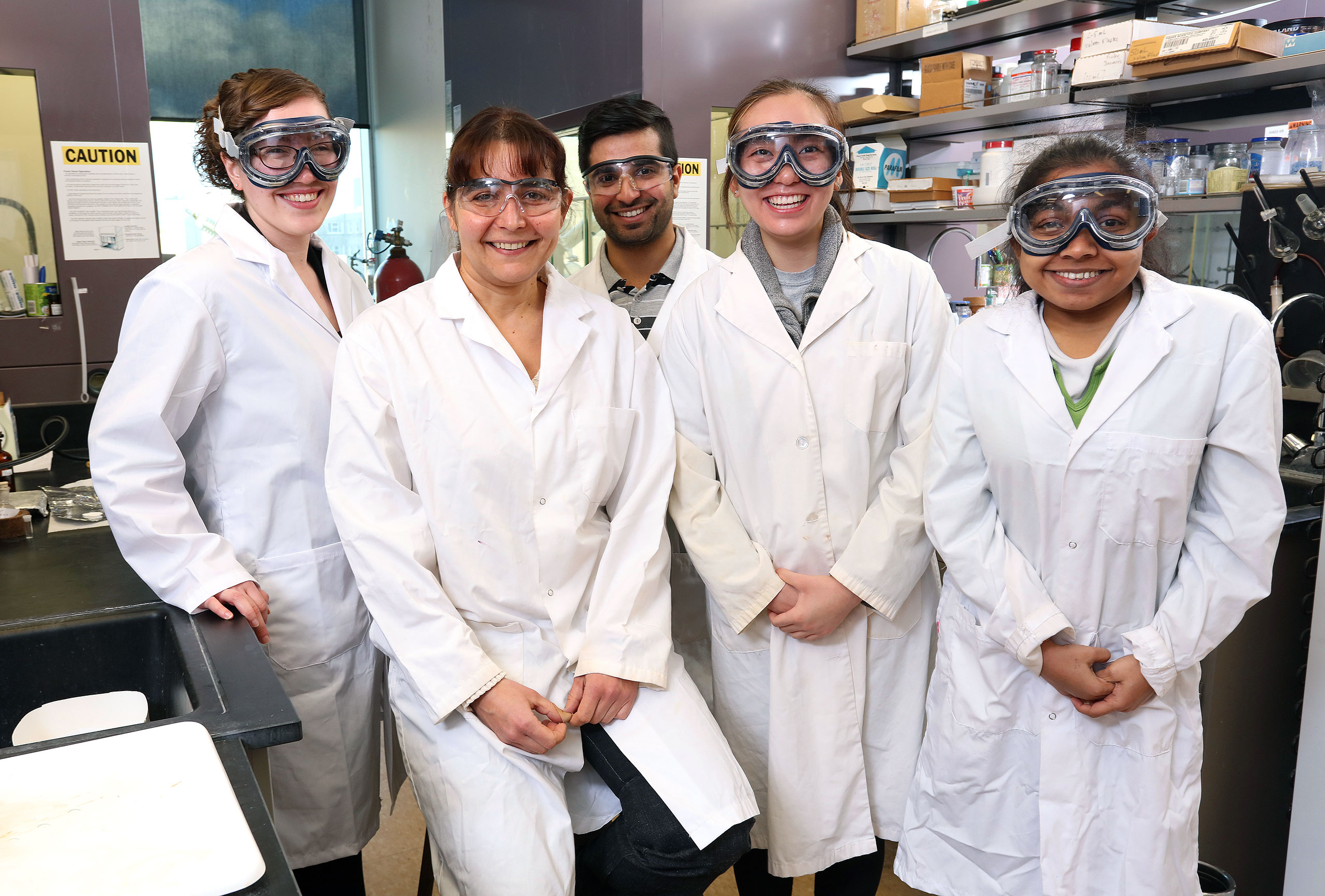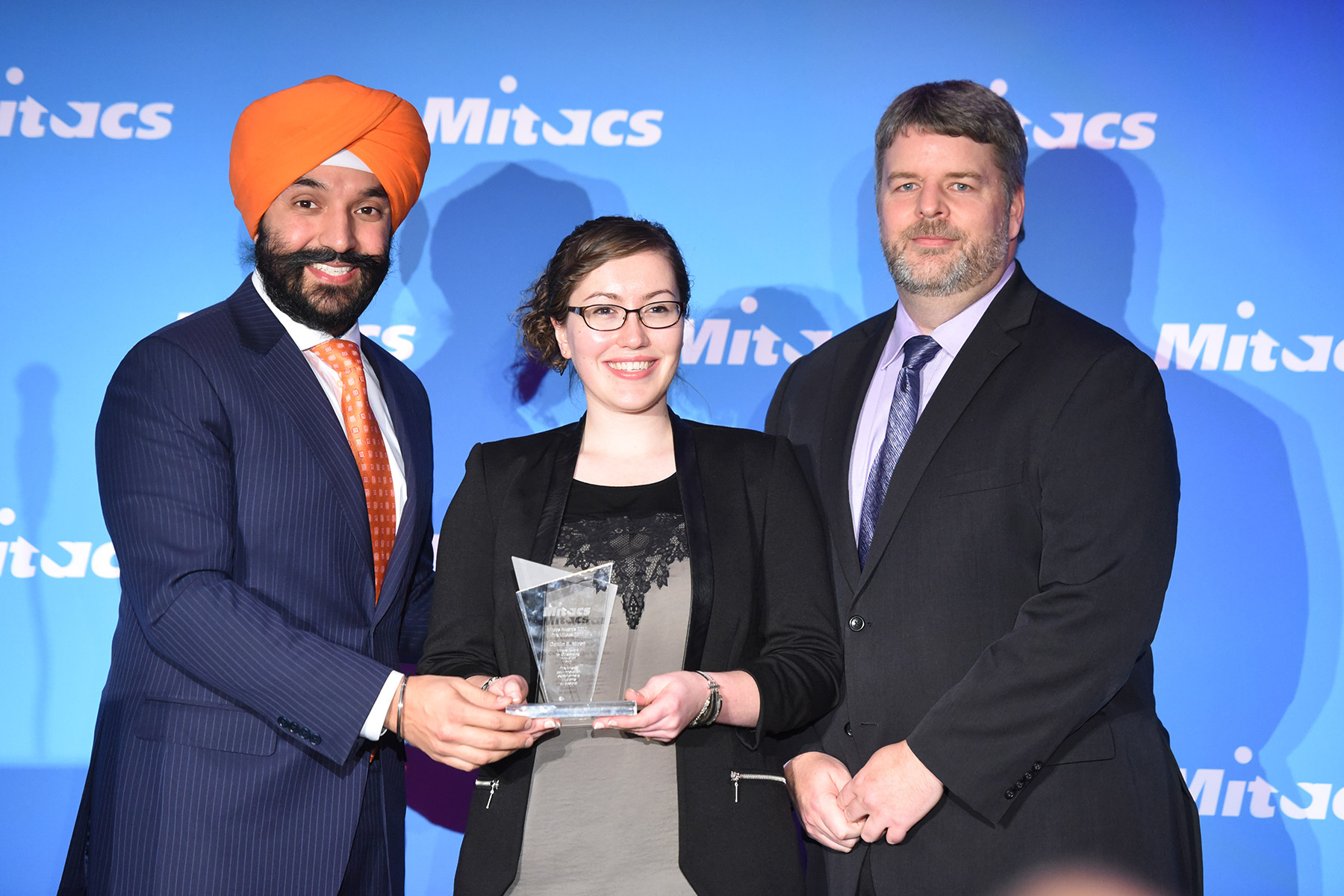Before realizing that she had made an important discovery, Caitlin Miron thought she had made a mistake.
As a PhD student in the Department of Chemistry at Queen’s University, Miron was in Bordeaux, France, doing a research stint at the Institut Européen de Chimie et Biologie. She had spent her time at the bench running tests on a series of molecules that had been sent over from Kingston by her supervisor, Dr. Anne Petitjean. What she was looking for were molecules that would bind with an unusual fold of DNA – in particular, one that might be implicated in the development of cancer.
Hoping that she was perfecting a technique that would let her run 96 experiments in a two-hour period, Miron was still feeling discouraged by her lackluster findings. Not that she was surprised: after all, fundamental research rarely produces immediate impact. But then something did happen: a molecule that Miron was testing seemed to be interacting exceptionally well with the fold of DNA. Presuming she had done something wrong, Miron ran the test again and got the same unusually promising result.
It was a moment in which serendipity and chance joined forces, enabling Miron to make a discovery that appears to have promising long-term applications in the fight against cancer and infection.

When Miron first began working in Dr. Petitjean’s lab as an undergraduate student in 2010, she was drawn to the magic of supramolecular chemistry. It involves creating molecules using organic chemistry and assembling them into architectures, which may then be used in biological applications, like finding solutions for drug delivery or working to identify modifications in DNA that might lead to disease.
After Miron landed an NSERC travel grant in 2015 while pursuing her PhD, Petitjean suggested she connect with Dr. Jean-Louis Mergny, with whom Petitjean had collaborated in the past. “His lab focuses on this unusual fold of DNA that has been implicated in cancer development and in viruses,” explains Miron.
It was a fantastic opportunity – one that would enable her to work with a leading French researcher while learning some effective new testing techniques. For Petitjean, who took up her position at Queen’s in 2005, it was also a chance to have one of her own students work through a box of samples from her Kingston lab, rather than shipping them over to be worked on by on-site technicians less connected to her research.
As Petitjean explains, there are two approaches to pursuing fundamental research. In the first, the scientist conceives of a molecule that he or she would like to create, and then pursues the funding to make it a reality. “In that situation, it’s really about the scientist’s brain saying they know it all.”
In the second, which she describes as “more humble,” the scientist gives up some control by opting to run tests on existing materials in hopes that they may generate a good result, which may not have been foreseen. “You hope that among the things you have around you, you might have a good candidate, but one that your scientist brain might not recognize as a good candidate,” she says.
It was this second approach that Petitjean and Miron decided to put their money on as Miron headed off to Bordeaux with her box full of powder in vials, all materials that Petitjean thought stood a chance of interacting positively with the DNA. “In scientific discovery it’s a common occurrence that something shows an exceptional behaviour,” says Petitjean, “not because of how an experiment was designed, but just because someone chose to try it.”

While scientists have been doing research on duplex DNA, which plays a role in everything from how we produce specific hormones, to eye colour, to determining our risk of cancer – since the 1950s, the research looking into unusual DNA folds is much more recent, dating back only a couple of decades. While DNA is usually found in a double helix, it needs to become single stranded to be read by our cell machinery. When that happens, the DNA – which Miron frequently describes as being like the chain of a necklace – allows proteins to move freely down that chain, like beads, until they reach a knot. One type of knot – a fold of DNA –comes in the form of a guanine quadruplex, or a stack of guanine nucleic bases which can be generated spontaneously. “The cell has a way of unknotting them so that the machinery can keep going,” Miron explains. “It’s very intricate.”
What recent science has discovered is that these knots frequently tend to form in front of sections of DNA called oncogenes. It is these genes that, if processed, can transform a healthy cell into a tumorous one, promoting the development and metastasis of cancer. What Petitjean and Miron wanted to know was whether it was possible to find a binder to stabilize the knots so that you could stop them from processing those troublesome genes. Previous research in the field had produced promising evidence that it was possible, and they wondered if their novel binders would perform the same way, working like super glue to make it impossible for the cell machinery to undo the knot and thus preventing cells from becoming cancerous.
In her first summer in Bordeaux, Miron was lucky enough to discover an encouraging sample, but didn’t know where that would lead. “For some research, there is one compound that is good and then nothing else,” says Petitjean. In this case, she explains, Miron was then able to test that sample’s “cousins” the following summer, only to find that they performed even more impressively. “We didn’t have to work with just one – instead we could play around with a whole family of molecules,” she explains.

While Miron, who won the Mitacs Award for Outstanding Innovation for her discovery, is quick to point out that this research is still at an “early bench stage,” they have filed a patent and do feel optimistic that the discovery could make a difference in the fight against cancer. “If we can block the processing of a particular oncogene, we can theoretically limit metastasis, or other aspects of cancer development,” she says, stressing that the discovery is not yet a cure for cancer.
As Petitjean explains, the challenge from a drug development perspective is in finding these unusual knots in a “sea of duplex DNA.” This is because in clinical drug trials, an excess of duplex DNA tends to “soak up” anything that is not specific enough for the fold of guanine quadruplex, diluting its effectiveness. “If you want your drug to be efficient, you want it to go to a specific area and not be soaked up in the wrong places,” she explains.
Miron likens it to “the difference between driving a normal car, which can be parked anywhere and so will go into the first available spot you find and driving a very specialized vehicle (our binder), which can only fit into a specifically-shaped parking spot. That spot would be your quadruplex.”
For Petitjean, the discovery confirms something even more important: that conducting research means taking risks and trying new things, even when you don’t know how it is going to work out. “The process of discovery is quite open,” she says. “You have to be bold enough to try things that maybe your brain didn’t perceive initially. You really have to take yourself out of your comfort zone.”



